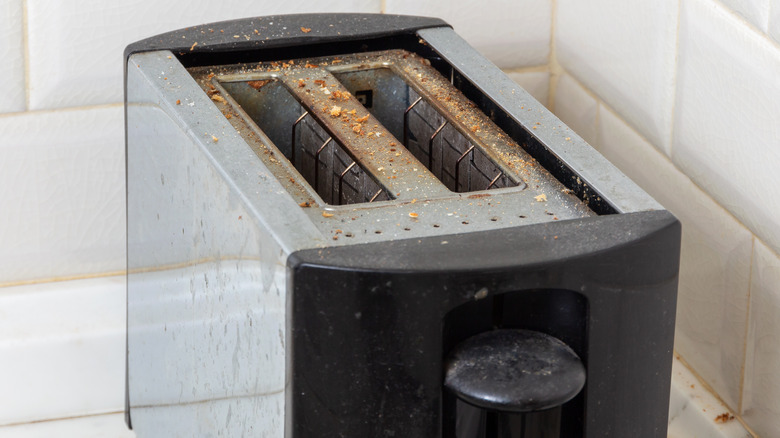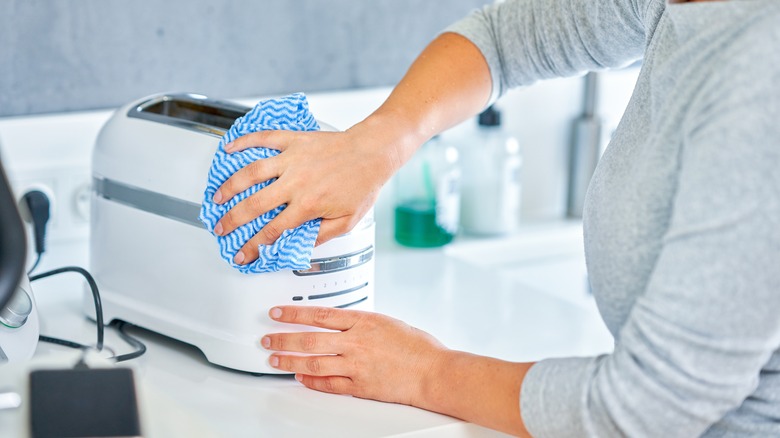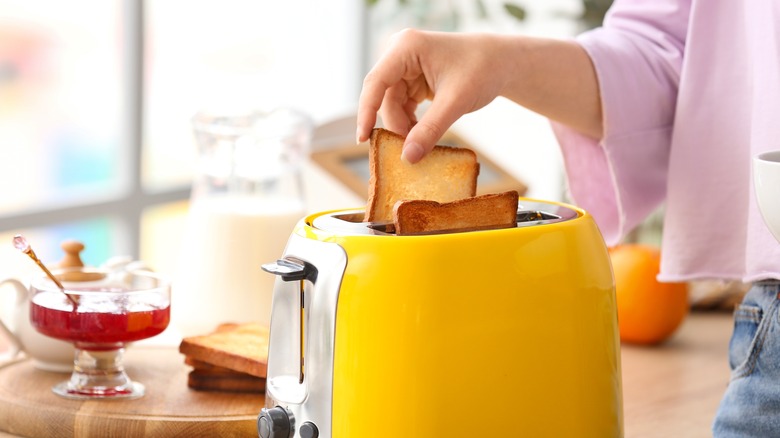Here's Why Cleaning The Kitchen Toaster Is More Important Than You Might Think
Whether it's used for breakfast waffles or a toasted sandwich, the toaster remains a popular appliance in modern kitchens. Owned by nearly four out of five homeowners, this appliance's beauty lies in its simplicity; even without complex settings, a digital interface, or a multifunctional design, it provides a dependable service for homeowners searching for a quick meal. However, it's also an appliance that gets overlooked when it's time to clean your kitchen.
Express estimates that nearly two out of three British homeowners do not clean their toasters enough and that roughly one out of ten have never cleaned them. However, it is generally recommended to remove excess debris every seven to ten days for both sanitary and safety reasons. This is because crumbs, seeds, and other debris create all the necessary conditions for a fire when combined with high heat output. Additionally, operating your appliance probably doesn't kill as much bacteria as you'd think, so cleaning its interior chamber with a simple tool is always worth the minor inconvenience.
Cleaning tips
When cleaning your toaster, a couple of crucial steps must be taken. First and foremost, make sure it is turned off and unplugged. Secondly, remove and empty the debris tray. From there, a simple soap and water rinse should get the tray back to acceptable standards. To clean the toaster's internal features, a wooden cleaning utensil is recommended for removing leftover items like melted raisins and seeds. These latter two tasks are imperative to mitigate the risk of a fire. Shari Blogs reports that nearly one in four toaster fires lead to physical harm or fatality, so this is not something to neglect.
As for the exterior of the toaster, this is a much more straightforward process; wiping it down with a damp cloth should do the trick. Chances are, your toaster is situated on your countertop near your coffee maker, slow cooker, or favorite space to prepare food. As such, it's bound to attract a number of stains and smudges that can make even a tidy kitchen seem dirtier than it actually is.
Doesn't using a toaster kill bacteria?
Many homeowners are under the impression that a toaster is somewhat of a self-cleaning appliance, given its standard operation of heating up well past a hundred degrees to cook our food. However, it is a bit more complex than that. While toasting bread does destroy certain organisms like yeast and some bacteria, the temperature your unit is reaching will determine how effective this is. Unfortunately, most bacteria can survive temperatures between 120 and 140 degrees, a typical range for household toasters operated at a medium setting. However, those who use their unit on a high setting are bound to rid their device of more bacteria while they prepare their morning bagel.
When using a toaster, heating between 150 and 160 degrees is the best option for minimizing exposure to these organisms and self-sanitizing to some degree. However, it should also be cleaned beyond that. This is especially important if your grains include seeds or are apt to crumble and leave debris behind during the toasting process. Basically, if you have a year's worth of crumbs sitting in the bottom of your toaster, the five minutes it will take to clean will surely be more convenient than dealing with a blazing fire in the heart of your kitchen.



